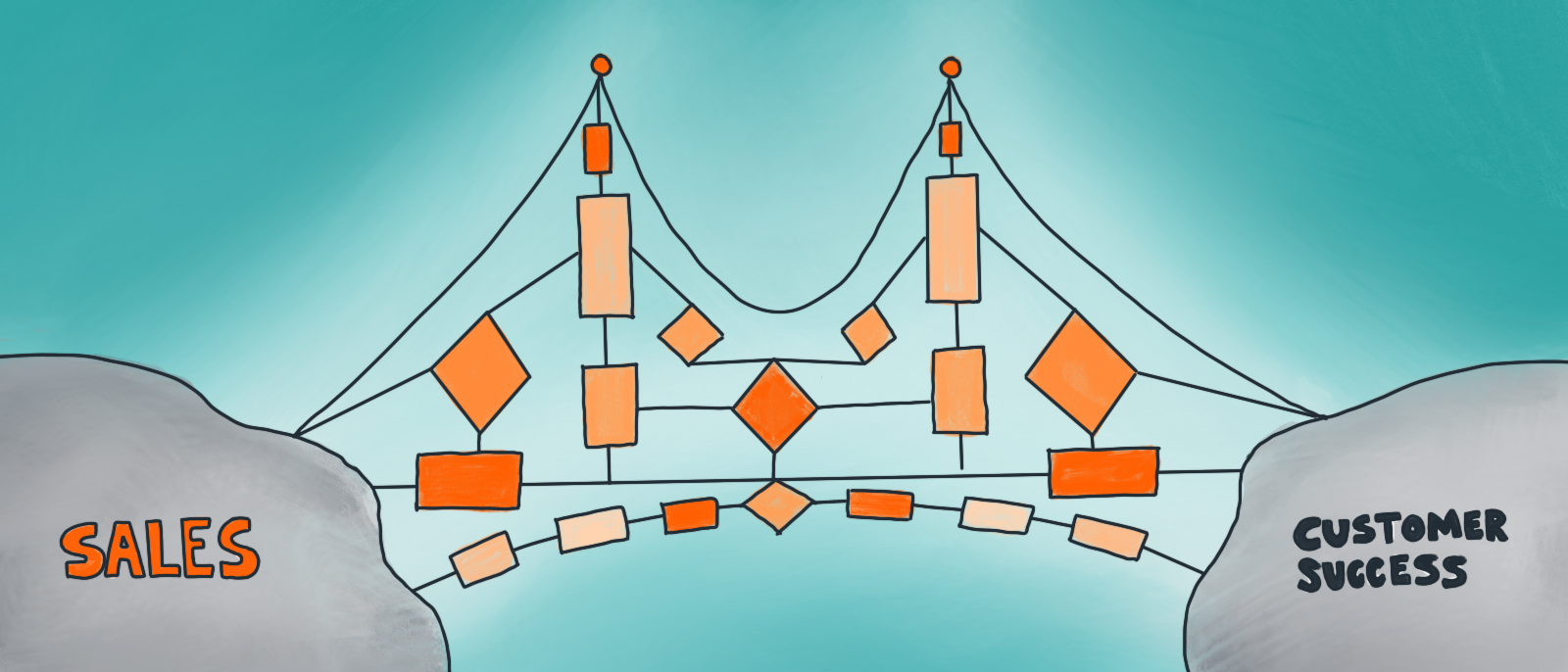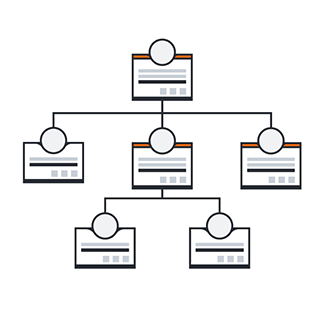
How visuals bridge the gap between sales and customer success
Reading time: about 4 min
In April I joined thousands of other professionals in California for Pulse, Gainsight’s annual customer success conference. We spent two great days listening to SaaS industry experts as they discussed challenges, solutions, and best practices for customer success teams. While the speakers addressed a variety of topics, one challenge in particular surfaced over and over again: coordination with sales. The focus on this theme was appropriate, as a strong partnership between sales and customer success is absolutely critical to any SaaS company’s success.
While this relationship is a crucial one, it’s also a difficult one. Many companies are still struggling with the knowledge transfer process between sales and customer success, which can easily derail efficiency and cause strain on the key relationship between the sales and customer success teams.
Transferring account knowledge from sales rep to customer success manager
As sales reps work an account, from the sales development rep first interacting with the customer to the account executive closing the deal, they develop a deep understanding of the customer. They know all the players, from the big blocker in IT to the enthusiastic champion in marketing. They understand the catalyst for the purchase decision and every step that led up to it.
This information is critical for closing the deal, but its value doesn’t end there—it’s just as vital for customer retention and expansion. The blocker in IT may continue to be a detractor, and the champion in marketing could help promote adoption of the product after purchase. Whether or not an account is renewed depends on whether or not the product fulfills the business objectives identified during the purchasing process. Customer success needs this deep knowledge of an account’s players and objectives in order to effectively support the customer in achieving those objectives and ensure the health of the account. Unfortunately, that critical information is not always passed along to customer success.
Yes, this account information is usually available in a company’s CRM, but it has minimal to no context when housed there. Rows of data in a CRM don’t connect the dots or tell the real story behind an account—the story that sales reps have painstakingly pieced together during their numerous interactions with a customer.
As a result, the customer success team is left to rediscover the key players and relationships involved in an account. It’s duplicative work that could be avoided with more efficient communication.
Bridging the gap
What if all that account knowledge lived somewhere besides the sales rep’s brain and an overcrowded CRM—somewhere accessible to both the sales and customer success reps whenever and wherever they need it?
Earlier this week, one of my customer success managers (CSM) was discussing POC plans for a major new account with the account’s sales rep. In order to bring the CSM up to speed, the sales rep pulled up an account map he had built while working the deal. The diagram visualized all the Salesforce contacts and arranged them hierarchically. While this visual representation of the organization was helpful, it was what the sales rep had done next that really allowed the CSM to get the inside scoop he needed.

The sales rep had assigned every contact a role, such as influencer, blocker, champion, and buyer, and identified the key relationships between them—relationships you can’t see on the typical org chart. The sales rep had tagged each individual in the diagram with critical notes, allowing the CSM to easily review the most pertinent information for that individual. As a result, the CSM gained a clear snapshot of all the critical players involved in the account and the story behind each of them. He understood the positive and negative relationships and how the sales rep had navigated those to close the deal. Together, the sales rep and CSM devised a plan of action to engage with the customer, and the CSM left the meeting with a clear picture of how to engage with the account in support of a successful POC.
And all of this accomplished in a single meeting with a single visual. The CSM didn’t have to spend hours digging through Salesforce, and the rep was able to quickly get back to working his other deals. It was a win-win that strengthened our ability to serve the customer as well as the relationship between our two teams.

Leveraging the power of visuals
Let’s circle back to my original question. Yes, there is a place away from the daunting CRMs and busy sales reps where account information can and should reside. Account maps are accessible to everyone, easy to understand, and the perfect vehicle for successfully transferring knowledge between reps and CSMs. The visual tells the story and bridges what can be a precarious divide between sales and customer success.
The effectiveness of visuals extends beyond this knowledge transfer. On our team, we build journey maps to document and analyze our touchpoints with customers. We map out user engagement email flows and document renewal and onboarding processes. This consistent visual communication helps us innovate faster, standardize our work, and keep our team aligned as we work with thousands of customers around the world.

Learn how to create account maps that keep sales and customer success aligned.
Read our tutorialAbout Lucidchart
Lucidchart, a cloud-based intelligent diagramming application, is a core component of Lucid Software's Visual Collaboration Suite. This intuitive, cloud-based solution empowers teams to collaborate in real-time to build flowcharts, mockups, UML diagrams, customer journey maps, and more. Lucidchart propels teams forward to build the future faster. Lucid is proud to serve top businesses around the world, including customers such as Google, GE, and NBC Universal, and 99% of the Fortune 500. Lucid partners with industry leaders, including Google, Atlassian, and Microsoft. Since its founding, Lucid has received numerous awards for its products, business, and workplace culture. For more information, visit lucidchart.com.
